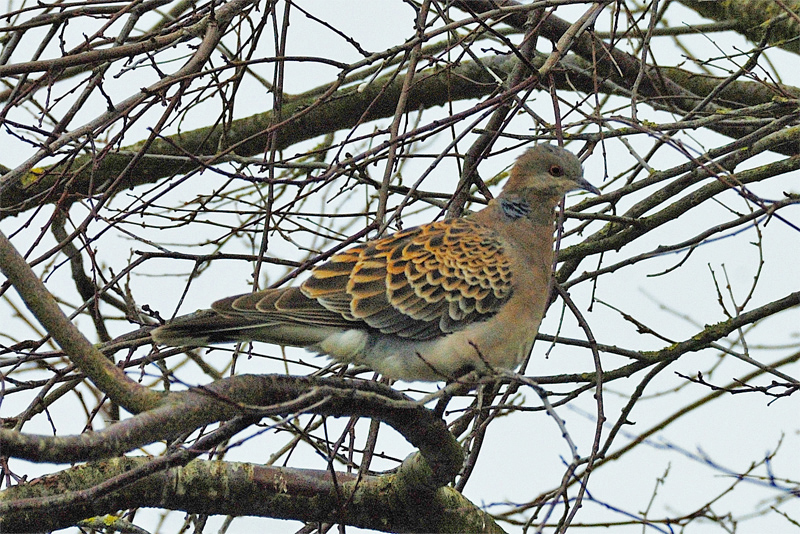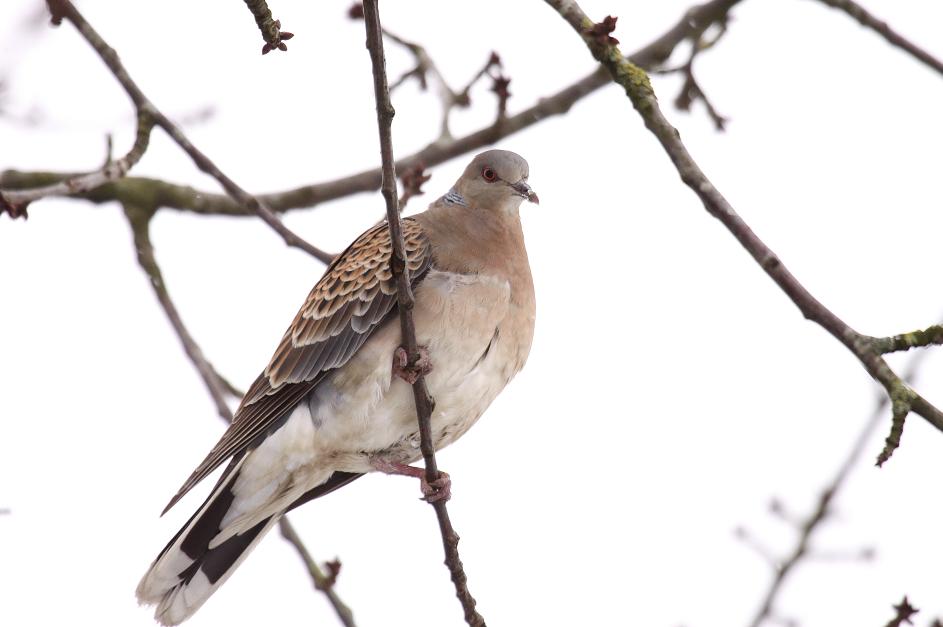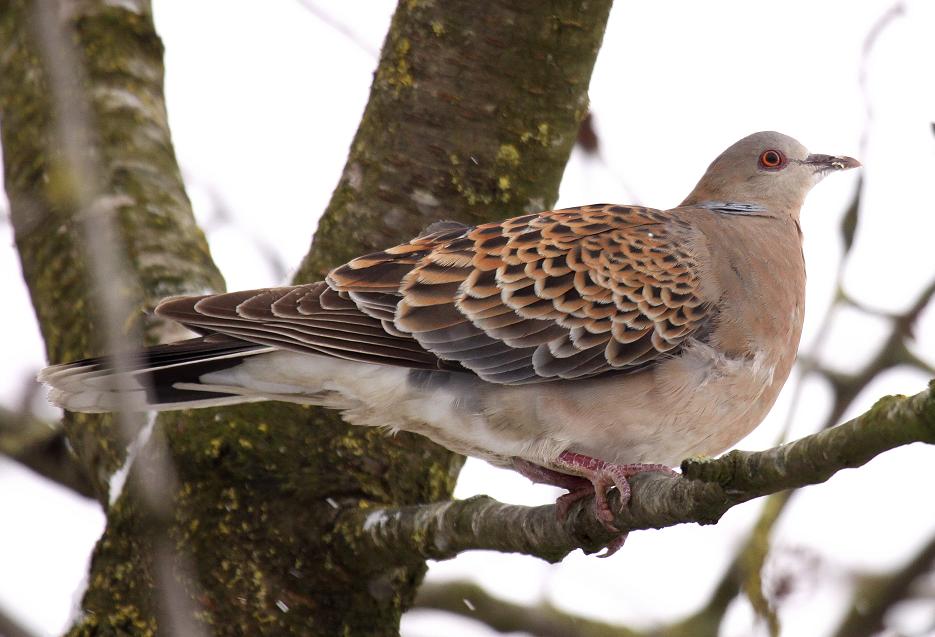
On Thursday 21 January 2010 Gerrit Nijboer was looking in his garden in the village of Wergea, south of Leeuwarden, Friesland province, when his eye fell upon a turtle dove. He took some photographs and sent it to The site of Rommert Cazemier. There it was quickly identfied as an Oriental or Rufous Turtle Dove Streptopelia orientalis, a new species for the Netherlands. The next day it was relocated by Dick Groenendijk en Robert Keijzer when it was seen feeding in a large garden south of a former church. On Saturday 23 January, a large crowd gathered and it was relocated again in a garden which proved to be its favourite location for the weeks to come. I was there too, but did not have very good looks, so I returned a few weeks later, when I got good views of this rare eastern vagrant.
The bird seemed to be an adult and was rather easy to identify by its larger size, brown neck, blue-grey rump and back, and the light tips on the wing coverts, compared to the uniform rufous of Turtle Dove Streptopelia turtur, also important is the wing formula, with p9 and p10 hidden behind p8, where in Turtle Dove, p9 is longer than p8, and therefore showing an extra primary. The white undertail coverts and white tips of the tail showed it belonged to the western subspecies meena.



It was accepted as the first record for the Netherlands. It is a rare bird in Europe, with 17 records in Sweden, 13 in Finland, 10 in Denmark, 5 in Norway, 8 in the UK, 3 in Spain, 1 accepted in Germany, 5 in France, 1 in Estland, the Far Oer, Hungary (also in 2010!), Italy, Letland, Austria and Poland.
Go to the main-index, the 2010-index or the Blue-cheeked Bee-eater?